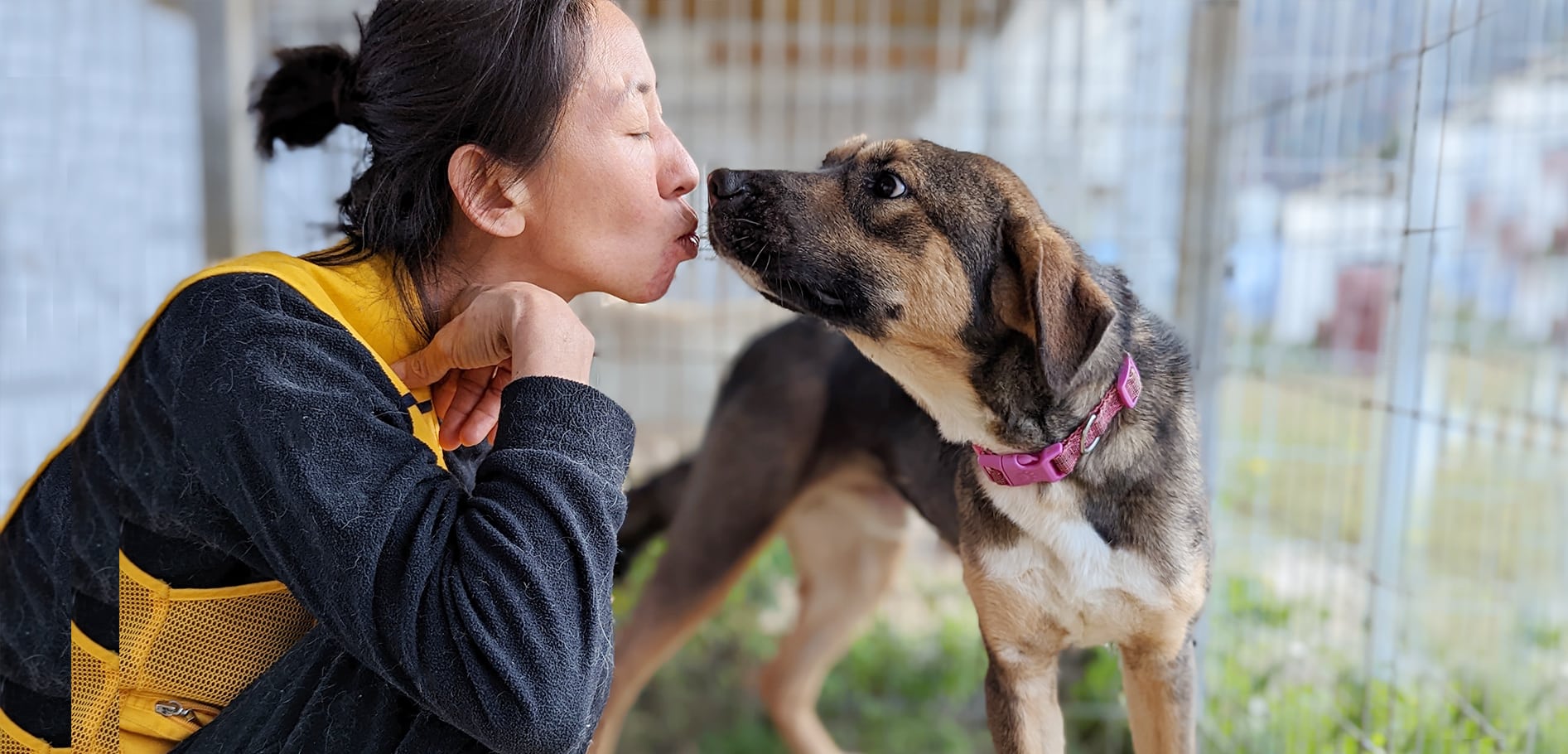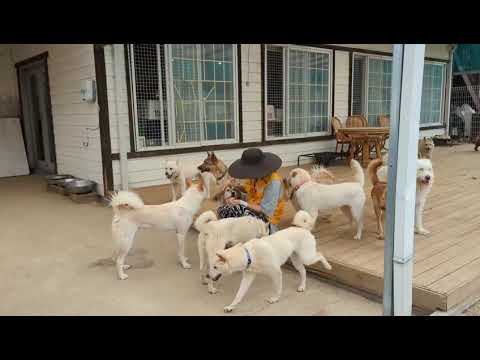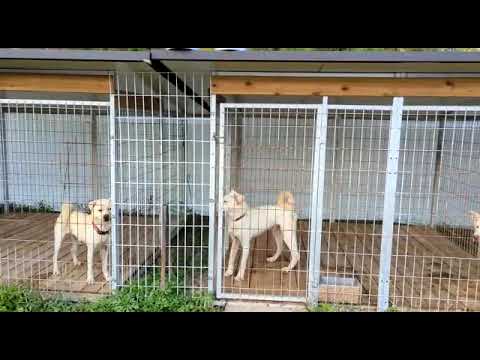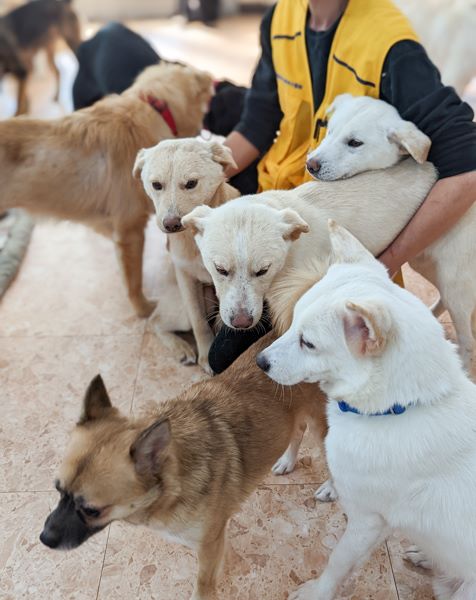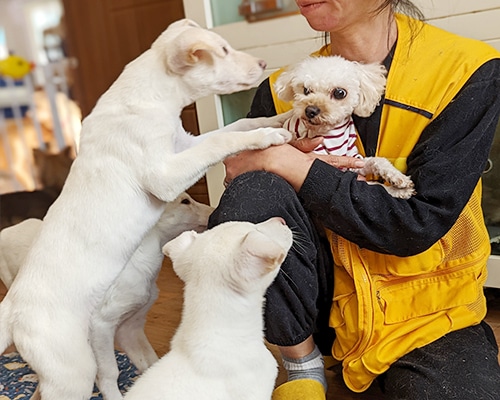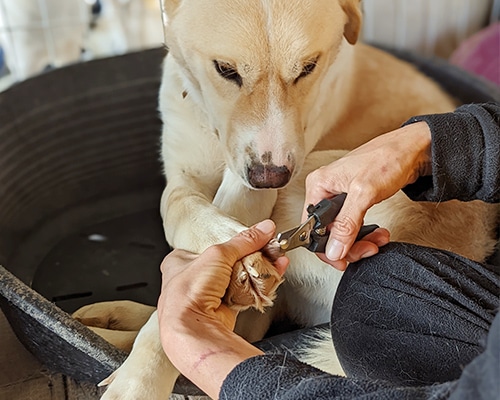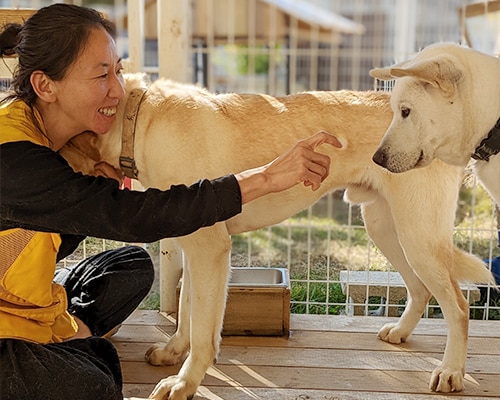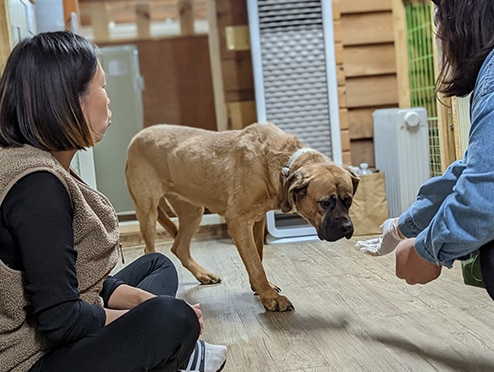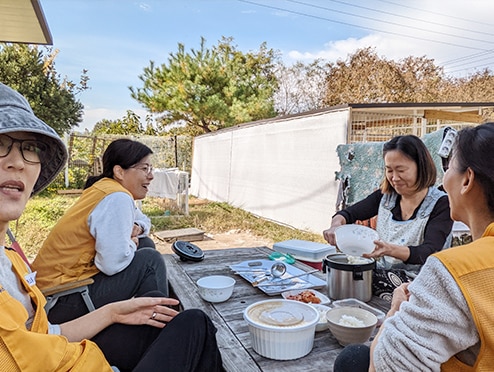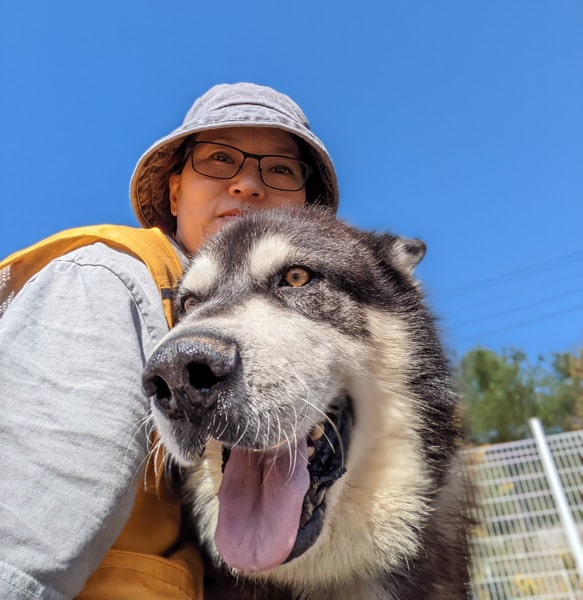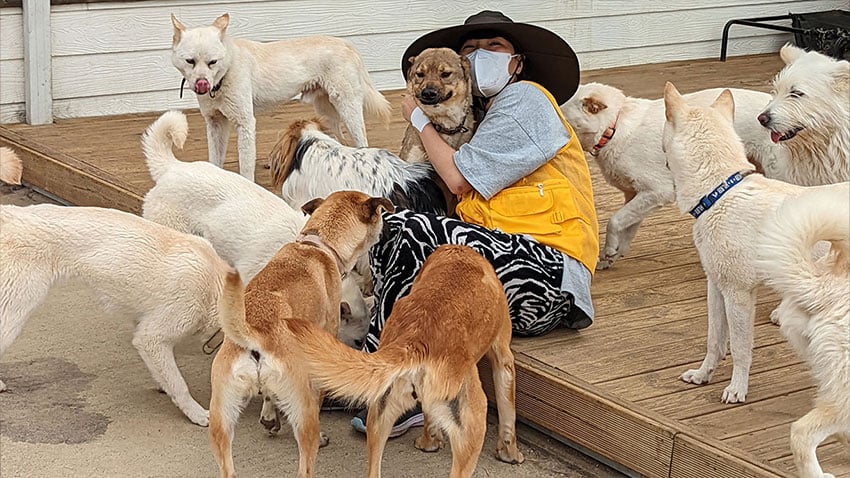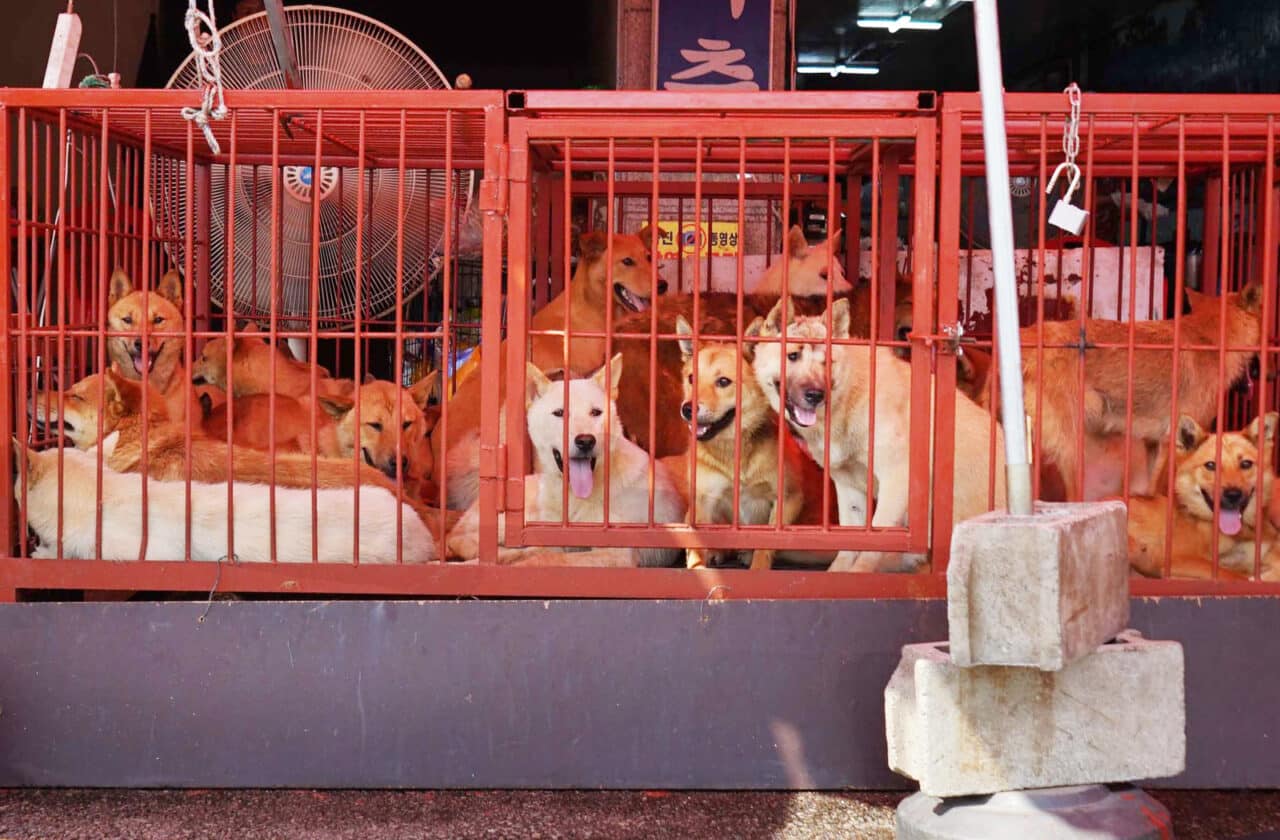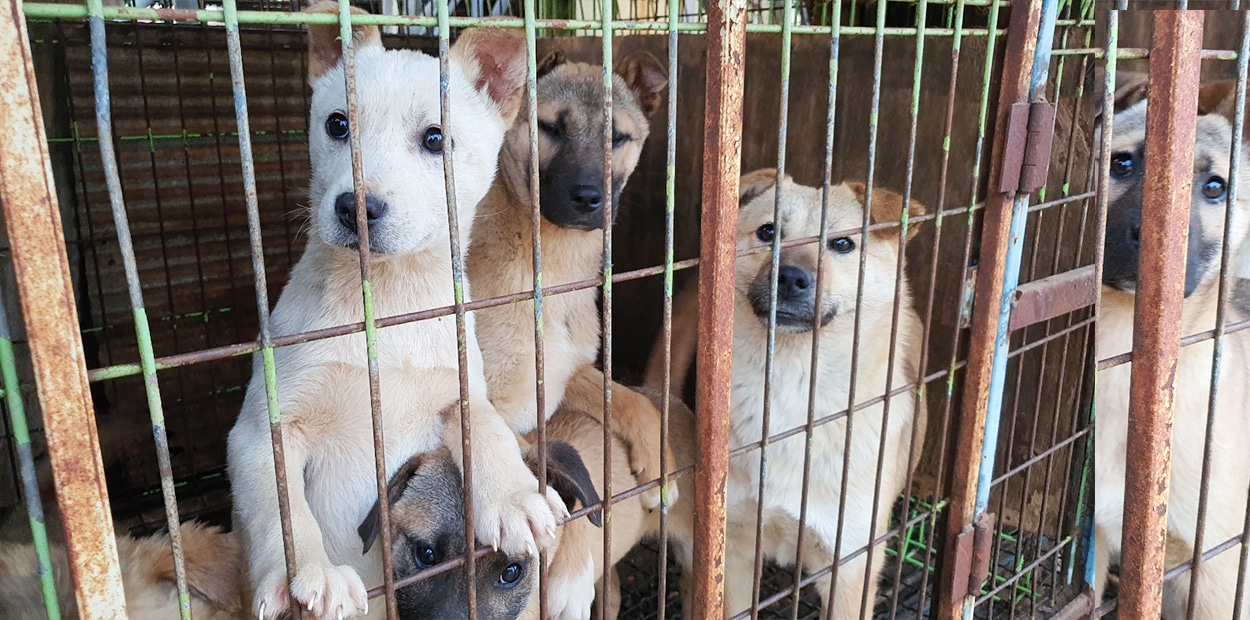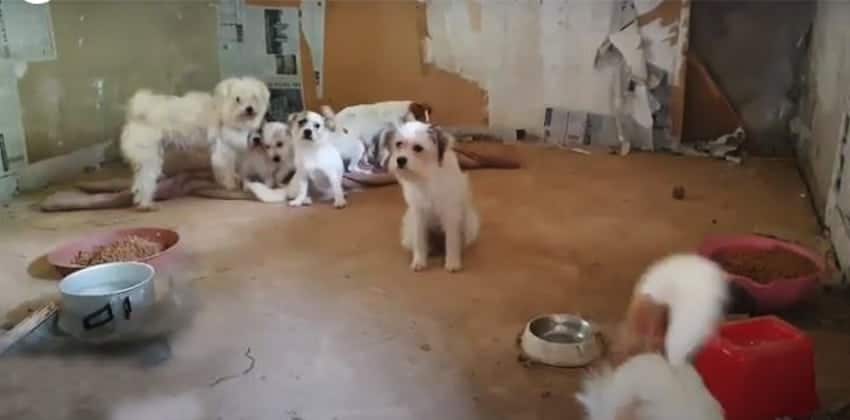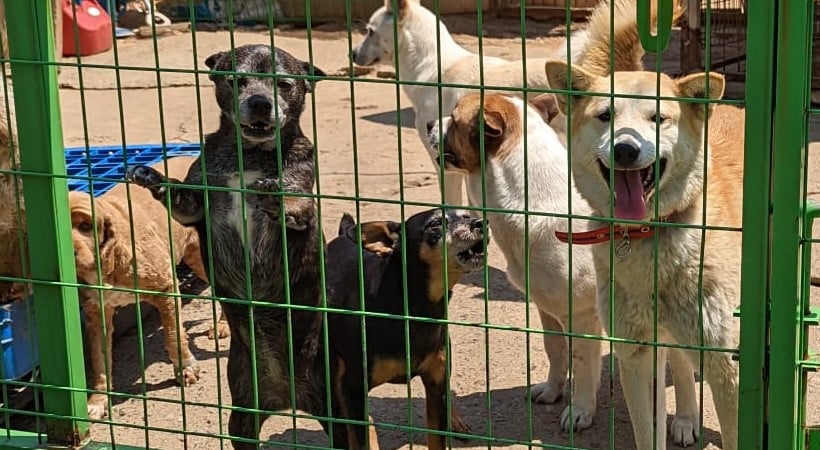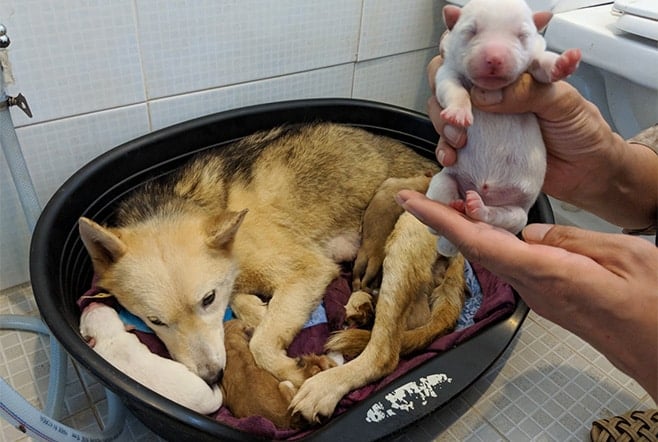An Inside Look Into Our Korean Shelters
Our executive director, EK Park, has returned to Korea to continue where we left off on our recent endeavor. The last time she had her boots on the ground, Free Korean Dogs led the shutdown of a dog meat farm operating in Sihueng, Korea, saving its 101 residents from a terrible fate. She oversaw the negotiation of the shutdown, legal contracts to ensure history would not be repeated, preparation of the shelter for intake, removal, and transportation of dogs from the farm, demolition of the farm, and the first stage of medical and behavioral assessments to determine a plan of action.
A Typical Day
5 months later, things look quite a bit different. The initial chaos has settled but the hard work never stops. A day in the life at the shelter feels simultaneously long and short. There is much to be done from dusk until dawn, but the work seems to be never-ending, no matter how many items we check off the “to-do” list.
The typical day starts at 6 am and ends at 8 pm. With over 120 rescue dogs of our own, and an additional 80+ rescue dogs being cared for at the shelter, there is never a dull moment. Among the more menial tasks are the day-to-day chores that need to be done. Each kennel is cleaned multiple times a day or as needed to keep the dogs’ living quarters hygienic for their health and comfort, as well as to prevent the spread of any potential diseases that might go undetected. During feeding times, dogs are individually fed in their kennels or crates to ensure no competition can lead to fights between them.
Getting to Know Our Residents
During the day, the shelter residents are let out of their kennels to have playtime and socialization. Since dogs are triaged into different groups, each group takes turns. Even though care is taken into determining which group they will belong to, something as simple as a dog playing too rough with another can cause conflict. Dogs are always supervised, which allows us to observe and assess their behaviors. Are they more dominant or submissive when they play? Do they like to play with others or are more indifferent? Do they prefer the company of big dogs, little dogs, or both?
Having constant supervision also ensures they are getting the proper socialization with humans. This aspect (or lack thereof) can make shelter life difficult for some residents. When you love and crave human attention but can’t always fully fulfill that need as sources for attention and affection are limited, it can be challenging. But every time staff and volunteers are out on the “playgrounds”, they are prepared for a tsunami of furry friends waiting to have their bellies rubbed, heads petted, and chests scratched. This also helps the dogs who are more wary of humans, helping them see other dogs’ interactions with humans and that they are not a threat.
Depending on their comfort level with humans, this socialization time provides the opportunity to perform basic health checks and procedures such as nail trims, ear cleanings, suture removals, fur, skin, and paw inspections, and to ensure there are no physical signs of illness or discomfort.
Slow and Proper Introductions
Coming into a shelter environment can be an overwhelming experience for dogs with a busy and noisy atmosphere. The shelter works with a triage system that is designed to help the dogs decompress at their own pace and slowly integrate them with the rest of the crowd. Ultimately, the goal is for them to peacefully coexist in the communal living setting. Those who only get along with certain sizes or personalities are triaged accordingly, while those with more “social butterfly” personalities are given more freedom to interact. When it is clear a resident needs consistent, close supervision when interacting with other dogs, they are kept separate. It is in situations like these training is considered, to help them overcome any issues and become the best versions of themselves.
The Mundane, but Important Considerations
While the idea of having many dogs living together in a shared, open space may seem ideal, there is much planning and consideration involved. When not dealing with the day-to-day aspects of running a shelter, we are working hard in the background ensuring we are keeping afloat and functioning. It is a constant game of numbers – everything from forecasting future expenses and budgeting accordingly, enduring emergency funds are available for unforeseen circumstances, projecting how many new intakes we can commit to, and additional resources such as training that we may need to provide for current and new intakes.
Aside from the numbers, we are also busy assessing whether or not we have enough space within our triage system to welcome in new dogs, especially during the initial quarantine period. We also need to assess the dogs behaviorally before intake to ensure we are equipped to meet their needs. For example, a dog who is scared and reactive with people and/or other dogs will require a separate space to themselves, and we need to ensure appropriate resources are available to make their stay as safe and comfortable for all involved.
Self-Reflections and Evaluations
While the majority of our dogs reside at our partner boarding house, our dog meat farm rescues reside among 3 shelters and 2 training schools. Except dogs from our smaller rescue projects, there are currently just over 130 dogs remaining in our care from our 2018 Dangjin dog meat farm closure and our 2022 Siheung dog meat farm closure. While our dogs from Siheung continue to be assessed and become available for adoption, 3 more of our Dangjin rescues have become ready this year, after 4 years of rehabilitation. Winter preparations have begun at our shelters, where kennels are outdoors while the winters are cold and dry with temperatures that often reach -20 degrees Celsius.
While we may not be able to physically be there with our rescues, we know that our babies are well-loved and cared for, and we are immensely grateful for it. During this trip, EK has been visiting the shelters and working hands-on with our rescues. Although the reason for this visit is to reflect on our current operations, she has been speaking to the shelter managers, listening to their concerns, and frustrations, and working together to see how things can be changed and improved.
We often say that shutting down a dog meat farm is the easy part. The hard work begins after and is a commitment to an unforeseeable future full of ups and downs. Rescue is a labor of love, and at the risk of sounding cliché, it makes it all worthwhile in the end when we look back and see the transformations we’ve helped create – with tongues out, wagging tails, and a new zest for life.
Subscribe for Updates
Get our dogs in your inbox once a month, along with our latest news and events. We never send spam, and you can opt out at any time.
